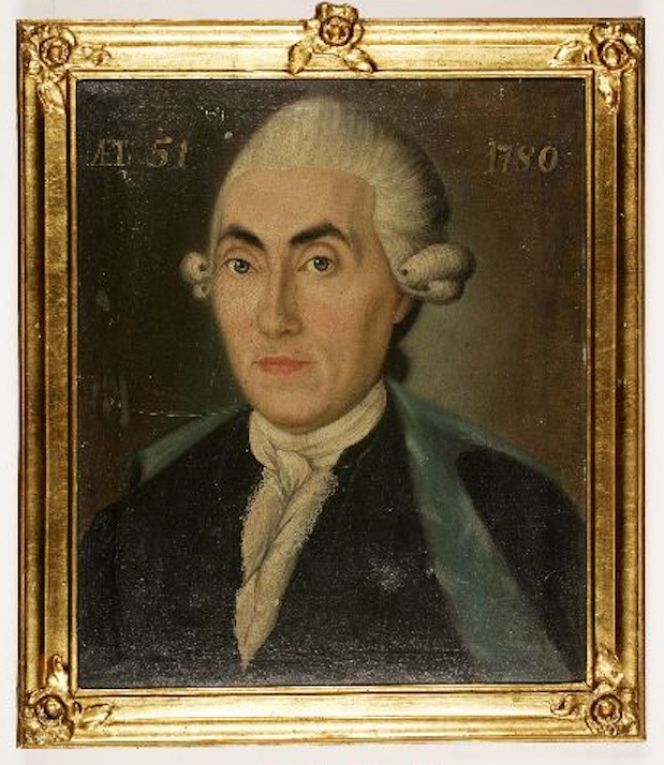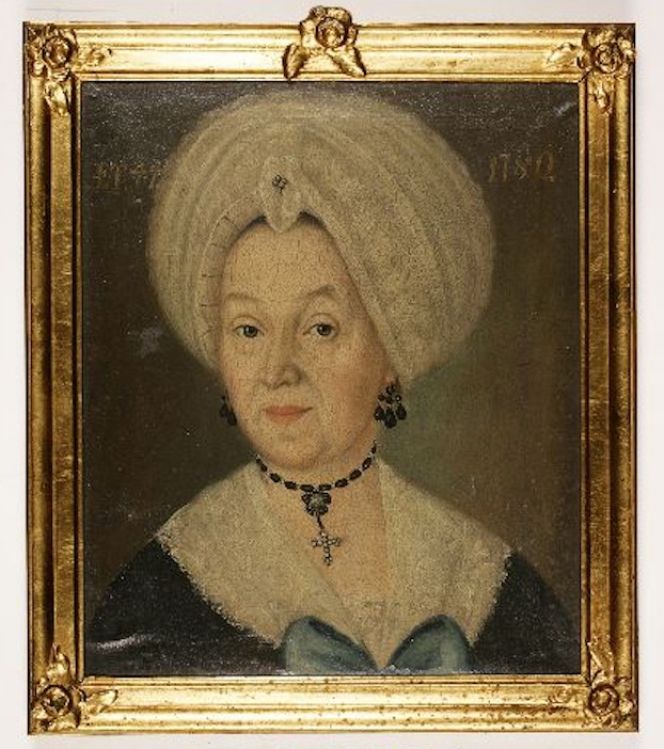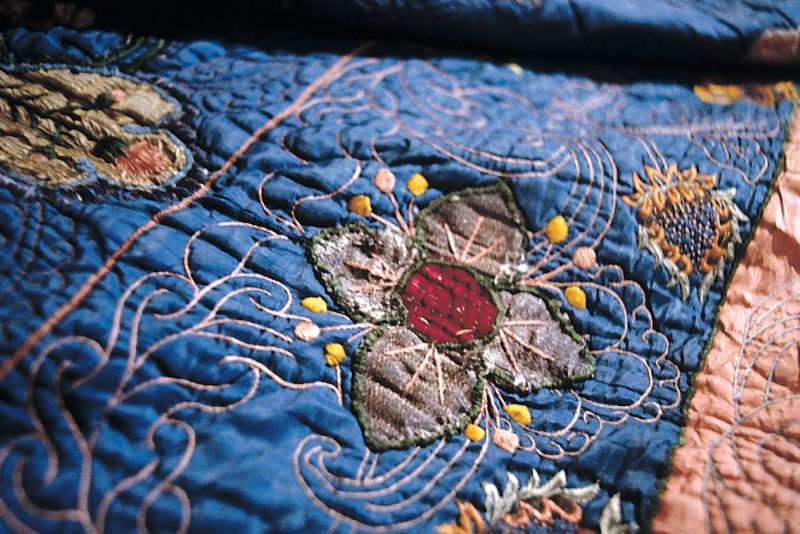ikfoundation.org
Promoting Natural & Cultural History



ESSAYS |
MERCHANTS AND NOBILITY
– a Late 18th Century Textile Study
Imported luxury goods, as well as various local stock from the Malmö merchants Falkman & Suell, can, for instance, be traced in existing accounts and receipts from the baron and cavalry captain Otto Wilhelm Mörner. Preserved silk embroideries and clothing are other proofs of the well-to-do inhabitants' increasing demand for silk wares of all kinds, even if it is often difficult to pinpoint where and by whom such fabrics once were in use. A few illustrations will accompany the written historical sources and preserved locally made silk textiles – in this late 18th century case study originating in southernmost Sweden.
 These portraits give a rare insight into a wealthy Malmö couple’s style of dress, at the exact dates of 9th and 10th May in 1780. The detailed paintings depict the city clerk Johan Lorens Flensburg…
These portraits give a rare insight into a wealthy Malmö couple’s style of dress, at the exact dates of 9th and 10th May in 1780. The detailed paintings depict the city clerk Johan Lorens Flensburg… …and his wife Maria Catharina. Some of the fine muslins, silks, broadcloths and laces were probably purchased at the local merchants Falkman & Suell, who can be traced in historical documents as traders of various imported luxury goods. Oil on canvases by Martin David Roth. (Courtesy of: Malmö Museum, MHM 002003 & MHM 002004, Creative Commons).
…and his wife Maria Catharina. Some of the fine muslins, silks, broadcloths and laces were probably purchased at the local merchants Falkman & Suell, who can be traced in historical documents as traders of various imported luxury goods. Oil on canvases by Martin David Roth. (Courtesy of: Malmö Museum, MHM 002003 & MHM 002004, Creative Commons).The year 1775 started a new era in Malmö; an extension of the harbour area gradually caused the city to expand and flourish. This was primarily due to the fact that ships could dock in the harbour by now, whereas previously, they had to anchor out on the road whilst goods were transported on barges to the coast. Prior to this period, some detailed accounts from the shop owners/merchants Falkman & Suell have been preserved. Frans Suell (1744-1817) was not only the leading businessman in the harbour project, but overall, he had great financial influence in the city for many years. Some individuals of the nobility living close by evidently purchased plenty of goods from his shop on half-year-long credits. One of them was Otto Wilhelm Mörner (1733-1791), married to Ulrika Fredrika Piper (1732-1791), who lived at their manor house, Toppeladugård, about 25 kilometres from Malmö. The couple married in July 1771, the same year as some of the accounts were written – today kept at the Piper Family archive at Christinehof manor house. Imported goods purchased by Mörner from June to November in 1771 included, for instance, black pepper, saffron, white sugar, coffee beans, nails, wax candles, lemons, olives and capris. Textiles and accessories listed were silk fabrics, gold thread, silver thread and camel yarn.
Whether it was possible to buy locally woven linen from the merchants Falkman & Suell or other shops in Malmö is more uncertain. Many of the previous active weavers – as described in an earlier essay – had at this time got better working conditions at a castle or large manor house in the county of Skåne or as a craftsman in a nearby parish. In 1793, only one master weaver and one apprentice were still practising this profession in the city, according to the historian Ernst Fischer, who conducted thorough research on linen weavers.
 This quilted silk bedcover – with rich silk embroidery – is a typical example of textile furnishing that could have been used in wealthy homes of the city during the second half of the 18th century. However, as with many similar fine silk fabrics/items kept by the local museum, it is not known where it was used or even less so by whom it was stitched. (Collection: Malmö Museum, MM 52381, part of). Photo: The IK Foundation, London.
This quilted silk bedcover – with rich silk embroidery – is a typical example of textile furnishing that could have been used in wealthy homes of the city during the second half of the 18th century. However, as with many similar fine silk fabrics/items kept by the local museum, it is not known where it was used or even less so by whom it was stitched. (Collection: Malmö Museum, MM 52381, part of). Photo: The IK Foundation, London.A smaller number of late 18th century silk textiles – from the substantial collection of clothing, bedcovers, ribbons, pocketbooks, samplers, etc., at Malmö Museum – were made or used locally at that period of time. One such item was a sampler embroidered with silk and wool on linen canvas by Anna Christina Pettersson (1788-1857) in 1795. She was a daughter to the local merchant Olof Pettersson (1746-1882) and his wife Lovisa Charlotta (née Faxe, 1766-1837). It was still foremost girls from well-to-do backgrounds in the ages of six to fifteen who stitched samplers for educational purposes, like the seven-year-old Anna Christina. Another local example is a small embroidered box, marked with the initials “ADB” and the year “1763”. The red silk fabric was decorated with appliqué of patterned silks, satin stitch of silk yarn and silver threads. This exquisite work was embroidered by the ten-year-old Anna Chatarina Bager (1753-1828), daughter to one of the merchant families of Malmö.
![These three complex silk ribbons are probably of French import, used/owned by a wealthy citizen of København [Copenhagen] – a few miles across Öresund from Malmö. However, it is very likely that similar types of exquisite accessories were sold at the previously mentioned merchant Falkman & Suell. The illustrated ribbons originate from the 18th century, woven on multi-coloured silk warps, with weft of silk, gold and silver threads. Techniques include; motif weft, brocading, double weaving and chiné. (Collection: Kunstindustrimuseet, visit at the exhibition “Fashion & Fabric”). Photo: Viveka Hansen.](https://www.ikfoundation.org/uploads/image/3-silk-ribbons-imports-800x468.jpg) These three complex silk ribbons are probably of French import, used/owned by a wealthy citizen of København [Copenhagen] – a few miles across Öresund from Malmö. However, it is very likely that similar types of exquisite accessories were sold at the previously mentioned merchant Falkman & Suell. The illustrated ribbons originate from the 18th century, woven on multi-coloured silk warps, with weft of silk, gold and silver threads. Techniques include; motif weft, brocading, double weaving and chiné. (Collection: Kunstindustrimuseet, visit at the exhibition “Fashion & Fabric”). Photo: Viveka Hansen.
These three complex silk ribbons are probably of French import, used/owned by a wealthy citizen of København [Copenhagen] – a few miles across Öresund from Malmö. However, it is very likely that similar types of exquisite accessories were sold at the previously mentioned merchant Falkman & Suell. The illustrated ribbons originate from the 18th century, woven on multi-coloured silk warps, with weft of silk, gold and silver threads. Techniques include; motif weft, brocading, double weaving and chiné. (Collection: Kunstindustrimuseet, visit at the exhibition “Fashion & Fabric”). Photo: Viveka Hansen.Notice: A large number of primary and secondary sources were used for this essay. For a full Bibliography and a complete list of notes, see the Swedish article by Viveka Hansen.
Sources:
- Fischer, Ernst, Linvävarämbetet i Malmö och det skånska linneväveriet, Malmö 1959.
- Hansen, Viveka, ‘Fyra sekel Malmö textil – 1650 till 2000’, Elbogen pp. 23-91, 1999 (pp. 42-45).
- Högestads & Christinehofs Fideikommiss historiska arkiv, (Piper Family archive, D III 9, accounts etc, Baron Otto Mörner).
- Kunstindustrimuseet, København [Design Museum, Denmark]. Visit at the exhibition “Fashion & Fabric” in 2015.
ESSAYS
The iTEXTILIS is a division of The IK Workshop Society - a global and unique forum for all those interested in Natural & Cultural History from a Textile Perspective.
Open Access essays - under a Creative Commons license and free for everyone to read - by Textile historian Viveka Hansen aiming to combine her current research and printed monographs with previous projects dating back to the late 1980s. Some essays also include unique archive material originally published in other languages, made available for the first time in English, opening up historical studies previously little known outside the north European countries. Together with other branches of her work; considering textile trade, material culture, cloth manufacturing, fashion, natural dyeing and the fascinating world of early travelling naturalists – like the "Linnaean network" – from a Global history perspective.
For regular updates, and to make full use of iTEXTILIS' possibilities, we recommend fellowship by subscribing to our monthly newsletter iMESSENGER.
been copied to your clipboard




– a truly European organisation since 1988
Legal issues | Forget me | and much more...
It is free to use the information/knowledge in The IK Workshop Society so long as you follow a few rules.
 LEARN MORE
LEARN MORE








